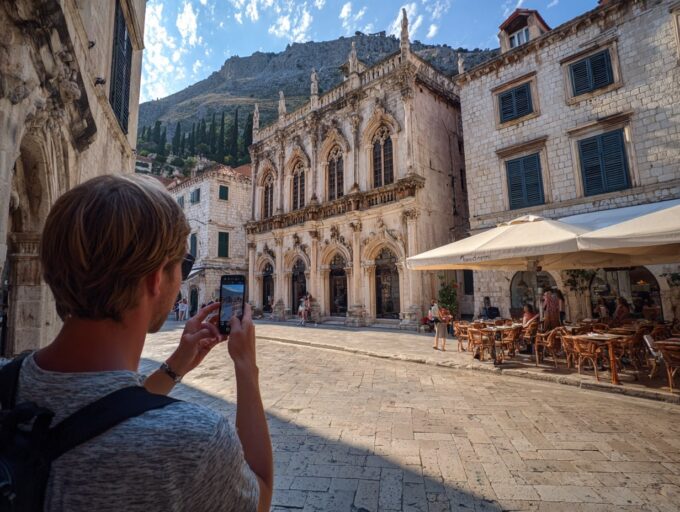- Home
- Articles
- Architectural Portfolio
- Architectral Presentation
- Inspirational Stories
- Architecture News
- Visualization
- BIM Industry
- Facade Design
- Parametric Design
- Career
- Landscape Architecture
- Construction
- Artificial Intelligence
- Sketching
- Design Softwares
- Diagrams
- Writing
- Architectural Tips
- Sustainability
- Courses
- Concept
- Technology
- History & Heritage
- Future of Architecture
- Guides & How-To
- Art & Culture
- Projects
- Interior Design
- Competitions
- Jobs
- Store
- Tools
- More
- Home
- Articles
- Architectural Portfolio
- Architectral Presentation
- Inspirational Stories
- Architecture News
- Visualization
- BIM Industry
- Facade Design
- Parametric Design
- Career
- Landscape Architecture
- Construction
- Artificial Intelligence
- Sketching
- Design Softwares
- Diagrams
- Writing
- Architectural Tips
- Sustainability
- Courses
- Concept
- Technology
- History & Heritage
- Future of Architecture
- Guides & How-To
- Art & Culture
- Projects
- Interior Design
- Competitions
- Jobs
- Store
- Tools
- More
Unmissable Architectural Travel Spots Every Design Enthusiast Should Visit
Discover the world's most iconic and hidden architectural gems in this guide for design enthusiasts. From ancient landmarks to modern marvels, explore how architecture tells stories of creativity, culture, and innovation. Dive into tips for planning the ultimate architectural journey and uncover the beauty of structures that shape our history and inspire our future.

Traveling isn’t just about seeing new places—it’s about experiencing the stories they tell through their design and structure. For those of us who find inspiration in sweeping skylines, intricate facades, and groundbreaking innovation, architecture becomes a gateway to understanding culture, history, and creativity.
From the timeless elegance of ancient landmarks to the bold statements of modern masterpieces, the world is filled with architectural gems that leave us in awe. Whether we’re drawn to the clean lines of minimalism or the grandeur of Gothic cathedrals, these destinations promise to ignite our imagination and deepen our appreciation for design.
Let’s explore some of the most unmissable architectural travel spots that every design enthusiast should have on their bucket list. These places don’t just showcase incredible craftsmanship—they remind us of the power of human ingenuity to shape the spaces we inhabit.
Table of Contents
ToggleWhy Architecture Lovers Should Travel
Traveling offers architecture enthusiasts an opportunity to connect with the artistry of different eras and cultures. Architectural sites embody the history, values, and innovations of the societies that created them. Exploring these spaces provides insights into the origins of design trends and techniques.
We gain inspiration by visiting iconic structures and hidden gems. Famous landmarks like the Eiffel Tower in Paris and the Alhambra in Granada highlight the diversity of global aesthetics. Beyond popular sites, regional buildings like Japan’s traditional machiya houses or Norway’s stave churches offer unique perspectives.
Architectural travel fosters a deeper appreciation for cultural expression. Structures combine local materials, craftsmanship, and environmental adaptations, showcasing ingenuity. Examples include the sustainable design of Singapore’s Gardens by the Bay and the intricate tilework of Iran’s Shah Mosque.
Engaging with world architecture allows us to see the transformative power of design. Spaces like New York’s High Line or Barcelona’s Park Güell demonstrate how urban environments evolve creatively. These experiences strengthen our understanding of architecture’s role in shaping cities and communities.

Iconic Architectural Landmarks
Architectural landmarks define cities and cultures, offering windows into the aesthetic and technical brilliance of their time. These destinations continue to captivate visitors with their design and historical significance.
The Eiffel Tower, Paris
The Eiffel Tower stands as a masterpiece of 19th-century engineering and design in Paris. Completed in 1889 by Gustave Eiffel, it reaches 1,083 feet and held the title of the world’s tallest man-made structure for over 40 years. Its lattice iron framework exemplifies Industrial Age innovation while offering unmatched views of the Parisian skyline to millions of tourists each year. The tower also remains a symbol of France, attracting over 7 million visitors annually.
The Colosseum, Rome
The Colosseum, Rome’s iconic amphitheater, reflects the grandeur of ancient Roman architecture. Completed in 80 AD under Emperor Titus, this massive structure accommodated up to 50,000 spectators for public events like gladiatorial games. Its elliptical design and advanced engineering features, including a retractable velarium for shade and subterranean chambers, highlight Roman ingenuity. Today, the Colosseum endures as a UNESCO World Heritage site and prominent tourist destination, showcasing the enduring legacy of Roman innovation.
The Guggenheim Museum, New York
The Guggenheim Museum in New York redefined modern architectural design when it opened in 1959. Designed by Frank Lloyd Wright, its spiral ramp and distinct cylindrical form broke architectural conventions of the time. This structure not only houses an extensive collection of modern and contemporary art but also serves as an artwork itself, attracting architects and art enthusiasts alike. Located on Manhattan’s Fifth Avenue, it exemplifies the union of form and function in mid-20th-century architecture.

Modern Architectural Marvels
Modern architecture showcases human creativity and innovation, blending aesthetics with cutting-edge technology. These structures redefine urban landscapes and inspire design enthusiasts worldwide.
The Sydney Opera House, Australia
The Sydney Opera House combines groundbreaking engineering with an iconic design. Completed in 1973 by architect Jørn Utzon, its sail-like shells dominate Sydney Harbor. This UNESCO World Heritage Site serves as a multi-venue performing arts center, hosting over 1,500 events annually. The design integrates seamlessly with its waterfront location, making it a symbol of modernist architecture and an essential stop for any design enthusiast.
The Burj Khalifa, Dubai
Reaching 2,717 feet, the Burj Khalifa stands as a masterpiece of modern engineering. Designed by Adrian Smith and completed in 2010, it’s the tallest building globally. Its tapering design, inspired by Islamic architecture, reduces wind forces at great heights. Beyond its aesthetic appeal, it houses commercial spaces, luxury residences, and observation decks. The LED façade light shows further highlight its architectural distinction.
The Lotus Temple, India
The Lotus Temple in New Delhi embodies modern spiritual design. Opened in 1986 and designed by Fariborz Sahba, it’s shaped like a blooming lotus with 27 marble-clad petals. This Baháʼí House of Worship welcomes people of all religions, offering a tranquil space for meditation. The surrounding nine reflecting pools enhance its visual appeal, blending functionality with symbolic significance.

Hidden Gems for Design Enthusiasts
Extraordinary architecture isn’t only about iconic landmarks—it also includes lesser-discussed masterpieces that combine art, history, and innovation. These hidden gems captivate design enthusiasts with their distinct charm and unique design philosophies.
Sagrada Família, Barcelona
The Sagrada Família, designed by Antoni Gaudí, exemplifies Barcelona’s architectural richness. Its intricate facades and soaring towers showcase a blend of Gothic elements and Art Nouveau curves, making it a stunning representation of Modernista style. Begun in 1882, the basilica remains under construction but draws millions annually with its kaleidoscopic stained glass and innovative structural details. Its interior design evokes a forest, with tree-like columns supporting the ceiling.
Fallingwater by Frank Lloyd Wright, Pennsylvania
Fallingwater integrates architecture with nature, perched dramatically over a waterfall. Conceived in 1935 by Frank Lloyd Wright, this home represents Organic Architecture by harmonizing with its surroundings. The cantilevered design uses local stone and concrete, merging indoor and outdoor spaces seamlessly. Visitors admire its open spaces and the soothing sound of flowing water, reflecting Wright’s philosophy of living in harmony with the environment.
Hundertwasserhaus, Vienna
The Hundertwasserhaus in Vienna challenges conventional design with its vibrant colors, uneven floors, and incorporation of greenery. Built in 1985, it reflects the artistic vision of Friedensreich Hundertwasser, who believed that architecture should respect nature. The irregular windows and curved lines create a whimsical aesthetic, while lush rooftop gardens emphasize sustainability. This apartment complex doubles as an artistic statement and inspiration for eco-conscious design.

Tips For Planning Your Architectural Adventures
Careful planning enhances the value of architectural travel. Understanding timing, budgeting, and essentials ensures a seamless and rewarding experience for design enthusiasts.
When And Where To Visit
Identifying ideal times to visit specific architectural destinations maximizes the experience. Spring and fall generally offer pleasant weather for outdoor exploration in regions such as Europe and North America. Destinations like Southeast Asia are best visited during cooler months, from November to February, to avoid excessive heat. For modern urban marvels like Dubai’s Burj Khalifa or Singapore’s Marina Bay Sands, weekday visits minimize crowds compared to weekends or holidays. Regional festivities, like Valencia’s Fallas Festival in Spain, can provide access to unique temporary architectural installations.
Budgeting For Architectural Tours
Allocating funds effectively impacts the overall experience. Entry fees for iconic structures like the Eiffel Tower, priced at around €28 for summit access, or the Alhambra, averaging €14, should be considered when budgeting. Account for private architectural tours, often ranging between $50 and $150 per person, covering guided insights into landmarks like the Guggenheim Museum or Fallingwater. Transportation costs, such as intercity train tickets, can increase when visiting multiple sites across countries. Affordable accommodation options, including boutique hostels near architectural hubs, help balance expenses while maintaining proximity to attractions.
| Expense Category | Examples | Typical Cost Range |
|---|---|---|
| Entry Fees | Eiffel Tower, Alhambra | €14-€30 |
| Guided Tours | Guggenheim Museum, Fallingwater | $50-$150 |
| Intercity Transportation | Train travel between cities | $20-$100, depending on distance |
| Accommodations | Hostels near architectural hubs | $15-$50 per night |
Must-Have Accessories For Design Enthusiasts
Carrying specific accessories enhances documentation and comfort during architectural adventures. A high-resolution camera captures intricate details in facades like Gaudí’s Sagrada Família or NYC’s Chrysler Building. A sketchbook lets us draft quick outlines of unique forms observed in places like the Lotus Temple. Comfortable walking shoes prevent fatigue when touring vast complexes such as the Colosseum or Gardens by the Bay. Additionally, durable backpacks ensure that essentials, including portable phone chargers and reusable water bottles, are securely stored during long exploration hours.
Conclusion
Architectural travel connects us with stories of human creativity, cultural identity, and design innovation. It provides unique opportunities to explore both renowned landmarks and hidden gems that define global heritage and modern progress. By immersing ourselves in diverse architectural styles and techniques, we deepen our appreciation for the relationship between form, function, and cultural expression.
Through thoughtful planning, we can experience the finest examples of architecture while enjoying seamless and enriching journeys. Timing visits strategically, budgeting for entry fees and tours, and equipping ourselves with essential gear allow us to fully engage with the intricate beauty and powerful narratives embedded in every structure.
- Architectural destinations
- Architectural travel guide
- architecture tourism
- architecture travel bucket list
- famous architecture sites
- famous buildings to visit
- hidden architectural gems
- historic architecture sites
- iconic landmarks
- modern architectural wonders
- must-see architecture
- off-the-beaten-path architecture
- top architectural destinations
- travel for architecture lovers
- travel landmarks
- unique architecture destinations
Submit your architectural projects
Follow these steps for submission your project. Submission FormLatest Posts
Istanbul: A Living Museum of Architecture
Istanbul is a city where East meets West, offering a rich architectural...
Top Architectural Wonders You Must See on Your Next Vacation for an Unforgettable Journey
Discover breathtaking architectural wonders across history and innovation on your next vacation....
Discover 10 Mosques in the Arabian Peninsula: Architectural Wonders and Spiritual Heritage
Discover the allure of the Arabian Peninsula through ten remarkable mosques that...
The Best Places to Travel in 2025: Top Destinations for Unforgettable Adventures
Discover the top travel destinations for 2025, from iconic hotspots like Kyoto...












Leave a comment